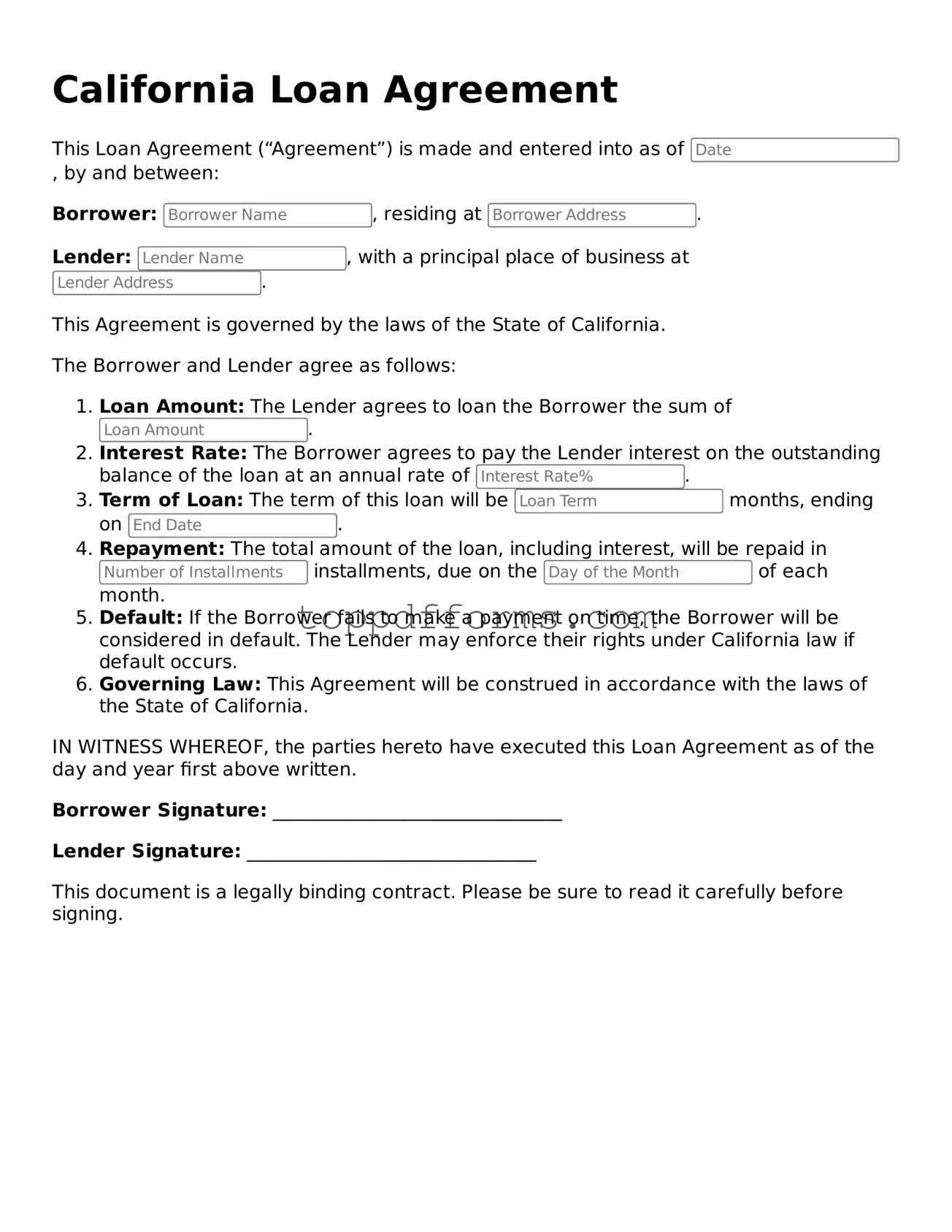What is a California Loan Agreement?
A California Loan Agreement is a legal document that outlines the terms and conditions under which a loan is provided. It typically includes details such as the loan amount, interest rate, repayment schedule, and any collateral involved. This agreement serves to protect both the lender and the borrower by clearly defining their rights and responsibilities.
Who should use a California Loan Agreement?
This agreement is suitable for individuals or businesses lending or borrowing money in California. Whether you are a private lender, a bank, or an individual seeking to formalize a loan, this document can help ensure that all parties understand their obligations. It is especially important when large sums of money are involved or when the loan terms are complex.
What are the key components of a California Loan Agreement?
Key components typically include the names and addresses of the parties involved, the loan amount, interest rate, repayment terms, and any fees associated with the loan. Additionally, it may specify the consequences of default, any collateral pledged, and the governing law, which in this case would be California law.
Is it necessary to have a lawyer review the Loan Agreement?
While it is not strictly necessary to have a lawyer review the Loan Agreement, doing so can be beneficial. A legal professional can help ensure that the document complies with California laws and adequately protects your interests. This is particularly important for complex agreements or significant amounts of money.
Can the terms of a California Loan Agreement be modified after signing?
Yes, the terms of a California Loan Agreement can be modified after signing, but both parties must agree to the changes. It is advisable to document any modifications in writing and have both parties sign the updated agreement to avoid misunderstandings in the future.
What happens if the borrower defaults on the loan?
If the borrower defaults, the lender has the right to pursue various remedies as outlined in the agreement. This may include charging late fees, accelerating the loan (demanding full repayment), or taking legal action to recover the owed amount. The specific consequences will depend on the terms agreed upon in the Loan Agreement.
Are there any legal requirements for a California Loan Agreement?
California law does not mandate a specific format for a Loan Agreement, but it must include certain essential elements to be enforceable. Both parties should sign the document, and it is advisable to have it notarized to add an extra layer of authenticity. Additionally, if the loan amount exceeds a certain threshold, specific disclosure requirements may apply.
How can I ensure my Loan Agreement is enforceable?
To ensure enforceability, the Loan Agreement should be clear and comprehensive. It should include all necessary details and be signed by both parties. Avoid vague language and ensure that all terms are explicitly defined. Consulting with a legal professional can further enhance the document's validity and compliance with state laws.
